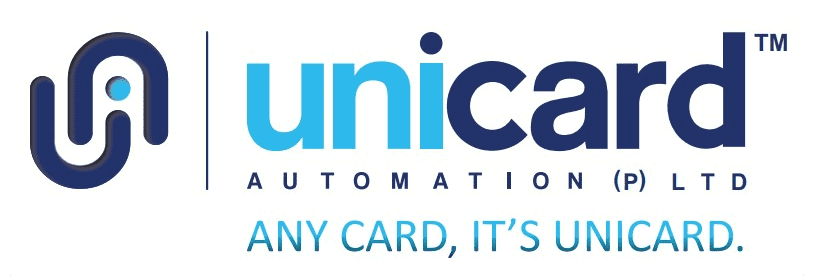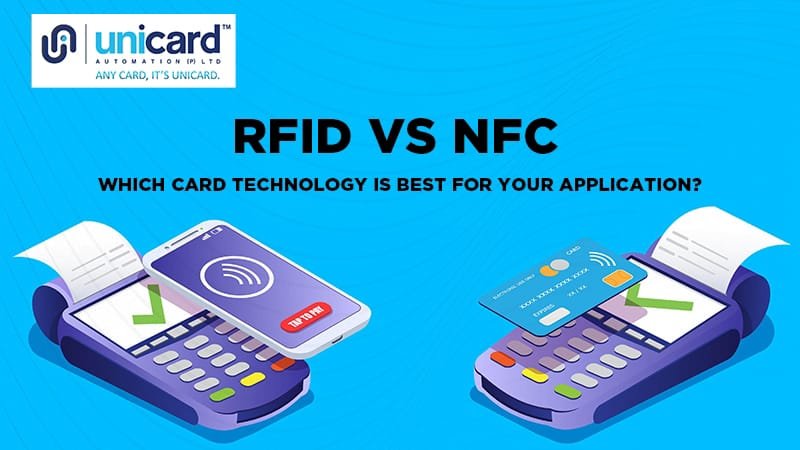Choosing the right card technology can make or break your project. Radio Frequency Identification (RFID) and Near Field Communication (NFC) both use wireless technology to transmit data—but they serve different purposes and excel in different scenarios.
RFID uses electromagnetic fields to automatically identify and track tags attached to objects, while NFC is a specialized subset of RFID that enables secure, two-way communication over very short distances. Understanding the strengths and limitations of each technology will help you make an informed decision for your specific application, whether it’s access control, payment systems, or inventory management.
RFID Explained: Long-Range Identification Power
RFID technology works by transferring data between a reader and an electronic tag using electromagnetic fields. An RFID system typically includes three components:
- RFID Tag or Smart Card
- RFID Reader
- Antenna
When the reader emits electromagnetic waves, tags within range respond by transmitting their stored data back.
Range and Frequency Options
RFID operates across three main frequency bands:
- Low Frequency (LF): 125-134 kHz, read ranges up to 10 cm
- High Frequency (HF): 13.56 MHz, read ranges up to 1 meter
- Ultra High Frequency (UHF): 860-960 MHz, read ranges up to 12 meters
Common RFID Applications
RFID excels in situations requiring bulk reading or long-distance identification. Typical use cases include:
- Inventory management and asset tracking
- Vehicle access control and parking systems
- Supply chain logistics
- Livestock identification
- Employee badges for building access
Its ability to read multiple tags simultaneously makes RFID ideal for warehouses, retail, and industrial settings where speed and efficiency matter most.
NFC Explained: Secure Short-Range Communication
Near Field Communication (NFC) is a specialized form of high-frequency RFID operating at 13.56 MHz, but with a very short range—typically just 4 cm or less. This limitation enhances security and allows for more controlled interactions.
Two-Way Communication Advantage
Unlike standard RFID, NFC supports three operating modes:
- Reader/Writer Mode: Functions like traditional RFID
- Peer-to-Peer Mode: Enables two-way communication between NFC-enabled devices
- Card Emulation Mode: Lets devices act as contactless smart cards
Popular NFC Applications
NFC technology is now common in everyday life:
- Contactless payments (Apple Pay, Google Pay, tap-to-pay cards)
- Public transportation fare systems
- Smart door locks and hotel room keys
- Social media sharing and device pairing
- Product authentication and anti-counterfeiting
The short range ensures interactions are intentional, secure, and user-friendly.
When to Choose Each Technology
Choose RFID When:
- Multiple items need to be read simultaneously
- Long-range detection is required (vehicle access, warehouse automation)
- Human interaction should be minimized
- Cost per tag is a primary concern
- Operating in harsh environments
Choose NFC When:
- Security is a top priority
- User experience requires intentional interaction
- Payment processing or digital wallets are involved
- Smartphone compatibility is important
- Two-way communication is needed
Recent Trends and Considerations
The rise of the Internet of Things (IoT) has expanded the possibilities for both RFID and NFC. Smart cities use RFID for traffic management and waste collection, while NFC adoption is growing in retail for contactless payments, product authentication, and digital interactions.
Most smartphones now include NFC chips, making NFC ideal for applications that blend physical and digital experiences. Meanwhile, RFID continues to dominate automated systems where range and bulk reading are critical.
Making the Right Choice
Ultimately, the choice between RFID and NFC depends on your specific needs: security, user experience, operational environment, and budget. RFID offers versatility and range for automation-heavy applications, while NFC delivers security and convenience for user-facing, interactive systems.
Partnering with experienced providers like Unicard Automation ensures proper system design, deployment, and ongoing support—helping you select the right technology for your unique requirements.





